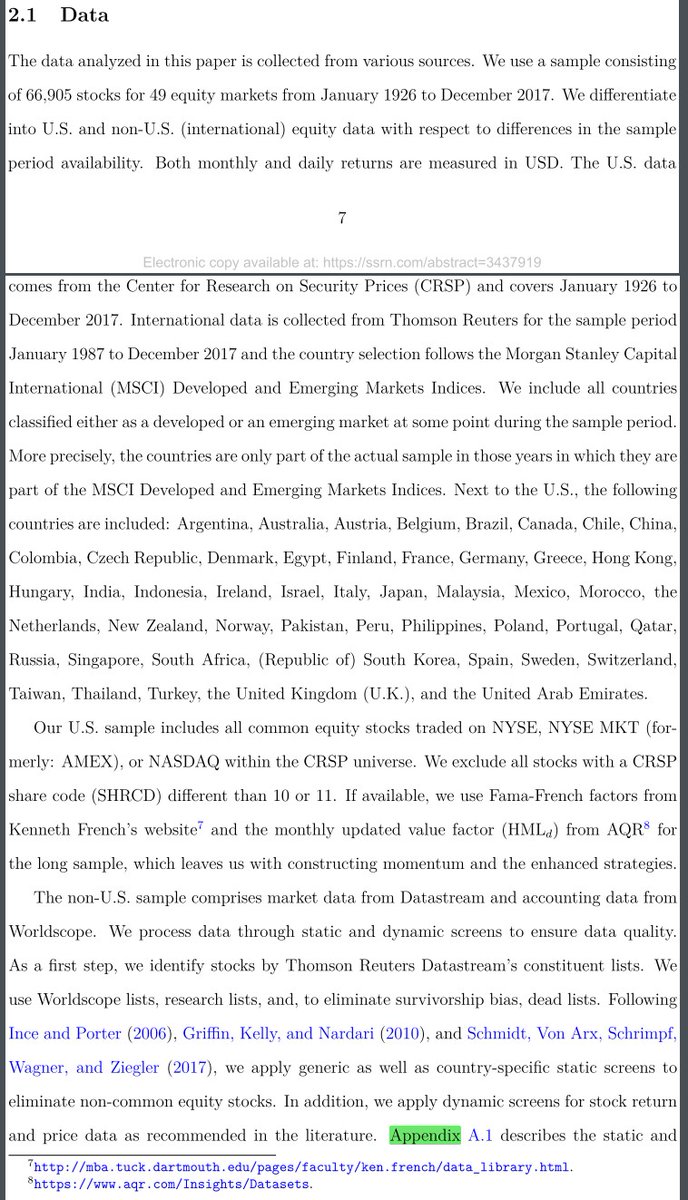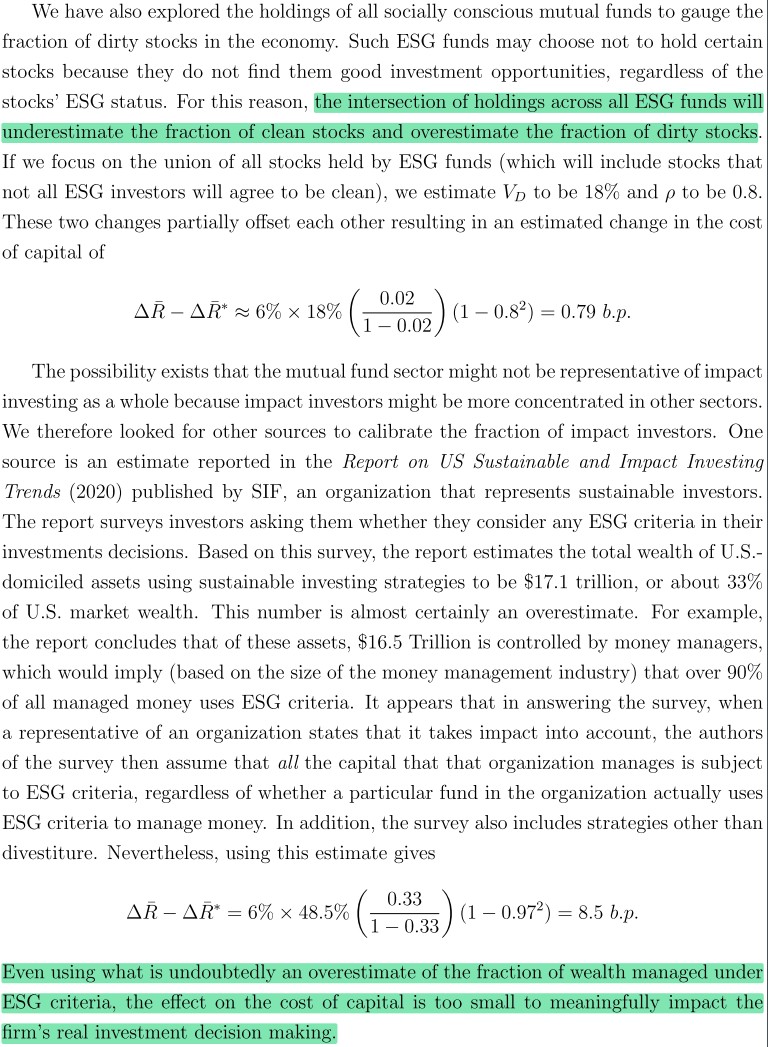
1/ Enhanced Momentum Strategies (Hanauer, Windmüller)
"In U.S. and international individual stocks, constant volatility-scaled, constant semi-volatility-scaled, and dynamic-scaled momentum all decrease momentum crashes and have higher risk-adj. returns."
papers.ssrn.com/sol3/papers.cf…
"In U.S. and international individual stocks, constant volatility-scaled, constant semi-volatility-scaled, and dynamic-scaled momentum all decrease momentum crashes and have higher risk-adj. returns."
papers.ssrn.com/sol3/papers.cf…

2/ "We calculate portfolio breakpoints for each country separately to ensure that country effects do not drive our results.
"Since we measure returns in USD, we calculate excess returns based on the 1-month U.S. Treasury bill rate."
HMLd = AQR HML-Devil monthly-updated factor



"Since we measure returns in USD, we calculate excess returns based on the 1-month U.S. Treasury bill rate."
HMLd = AQR HML-Devil monthly-updated factor




3/ cMOM targets a constant momentum portfolio volatility (chosen so that the full-sample volatilities of momentum and cMOM are identical) using 126-day trailing volatility as the forecast.
sMOM uses downside volatility.
dMOM is like cMOM but includes a strategy return forecast.


sMOM uses downside volatility.
dMOM is like cMOM but includes a strategy return forecast.



4/ "Comparing enhanced momentum strategies with MOM, we show that all of them exhibit higher t-statistics and Sharpe ratios (both nearly double compared to standard momentum). Furthermore, skewness, kurtosis, and maximum drawdowns decrease in magnitude." 





5/ "MOM and cMOM or sMOM are highly correlated. The correlation between MOM and dMOM is lower, which can be traced back to larger strategy differences.
"All are more negatively correlated with HMLd than with HML. We therefore substitute HMLd for HML to create the FFd model."
"All are more negatively correlated with HMLd than with HML. We therefore substitute HMLd for HML to create the FFd model."

6/ "The alphas of all enhanced strategies with respect to the FFd factors plus MOM are economically and statistically significant.
"The highly negative correlation makes MOM relatively more attractive (when also controlling for dMOM) when controlling for HMLd than when not."

"The highly negative correlation makes MOM relatively more attractive (when also controlling for dMOM) when controlling for HMLd than when not."


7/ "FF3FM + MOM is dominated by the FFd + MOM. This primarily stems from the more negative correlation of momentum and HMLd.
"As already suggested by the factor spanning tests, the enhanced momentum strategies incorporate significant information, even beyond standard momentum."

"As already suggested by the factor spanning tests, the enhanced momentum strategies incorporate significant information, even beyond standard momentum."


8/ "Standard momentum and enhanced momentum have cross-sectional stock return predictability around the globe. However, the observed momentum premia vary across countries." 



9/ "For countries in a market continuation month (positive market return following a positive market year), MOM returns are 1.86% higher. The continuation dummy (proxying time-varying investor overconfidence) has the strongest impact on differences in country momentum returns." 







10/ "Our study provides out-of-sample evidence suggesting that time-varying investor overconfidence (proxied by the market continuation dummy) is superior to time invariant investor overconfidence (proxied by individualism)." 



11/ "MOM, cMOM, and sMOM are more related to market continuations in bear than to market continuations in bull markets. (During bear markets, a market continuation, defined as a contemporaneous down-movement of the market, generates higher returns compared to a market reversal.)" 

12/ "One-way turnover increases for all enhanced strategies, especially dMOM.
"U.S. momentum investors are only 5% sure that strategy will have net profits when transaction costs do not exceed 0.60%.
"There may also be interaction effects between market volatility and costs."

"U.S. momentum investors are only 5% sure that strategy will have net profits when transaction costs do not exceed 0.60%.
"There may also be interaction effects between market volatility and costs."


13/ "Grundy and Martin (2001) point out that in January, the momentum strategy “goes short prior losers, and prior losers tend to have become extremely small firms”, which is traced back to fund managers selling small-cap losers in December that reverse in January." 

14/ Related reading:
Volatility-Adjusted Momentum
Alpha Momentum and Alpha Reversal in Country and Industry Equity Indexes
Risk Adjusted Time Series Momentum
Volatility-Adjusted Momentum
https://twitter.com/ReformedTrader/status/1163915680137150464
Alpha Momentum and Alpha Reversal in Country and Industry Equity Indexes
https://twitter.com/ReformedTrader/status/1217567206784954368
Risk Adjusted Time Series Momentum
https://twitter.com/ReformedTrader/status/1404810557144829952
• • •
Missing some Tweet in this thread? You can try to
force a refresh























